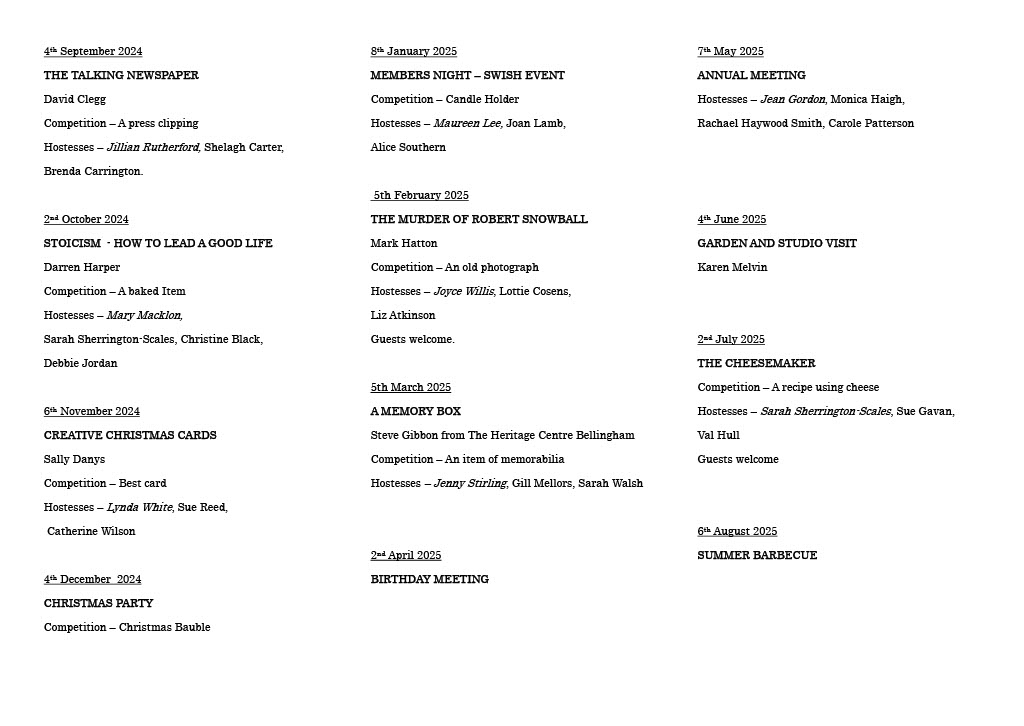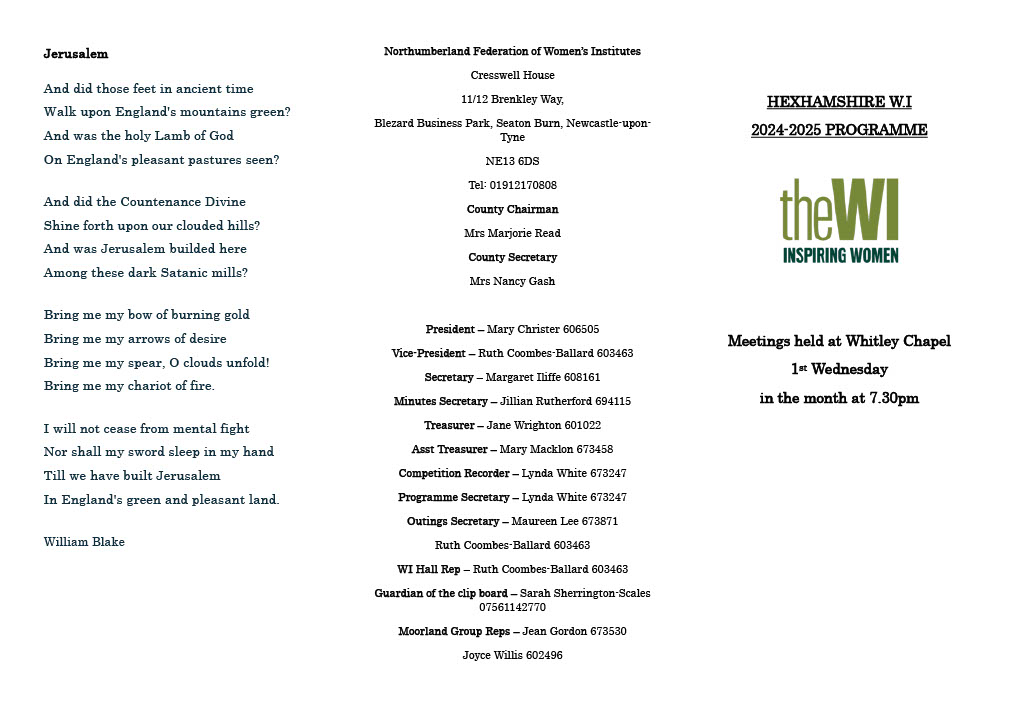

The History of the Women’s Institute
The WI movement began at Stoney Creek, Ontario in Canada in 1897 when Adelaide Hoodless addressed a meeting for the wives of members of the Farmers’ Institute.
Madge Watt, a founder member of the first WI in British Columbia, organised the first WI meeting in Great Britain, which took place on 16th September 1915 at Llanfairpwll on Anglesey, Wales. The organisation had two main aims: to revitalize rural communities and to encourage women to become more involved in producing food during the First World War.
Women’s Institutes were formed in Scotland and Northern Ireland independently of those in England and Wales. The first Women’s Rural Institute started in Scotland on 26th June 1917, and Madge Watt travelled up from London to speak to a meeting at Longniddry. It was renamed in 2015 as The Scottish Women’s Institute. The first WI in Northern Ireland was formed in Garvagh in 1932 and the Federation of Women’s Institute for Northern Ireland established 1942.
Transgender WI Statement 2017
The WI is a women only organisation, and has clarified in a 2017 statement, Transgender WI membership, that ‘Anyone who is living as a woman is welcome to join the WI and to participate in any WI activities in the same way as any other woman.’
Campaigns
The WI campaigns on a wide range of issues affecting women, based on resolutions agreed at each year’s national Annual Meeting. Its first resolution, passed in 1918, called for ‘sufficient supply of convenient and sanitary houses, being of vital importance to women in the country. Another example in 1943 they called for Equal Pay for Equal Work and continued to argue for this until 1970 when the Equal Pay Act was passed.
Jerusalem
This hymn was originally written as a poem by William Blake in 1804. The lyrics were added to Hubert Parry’s music in 1916 during the gloom of World War I.
When Millicent Fawcett, (who was the leader of the National Union of Women’s Suffrage Societies from 1897), heard the hymn she asked Parry if the women’s suffrage movement could use it. He agreed and Jerusalem was first sung at the Royal Albert Hall at a suffrage rally in 1918.
Grace Hadow, one of the founders of the Women’s Institute and a Suffragist, had the idea of transferring Jerusalem from the Suffrage movement to the W.I. So from 1924 the Women’s Institute and Jerusalem were linked. The W.I. also inherited the same colours from the women’s suffrage movement – green, white and violet.
Hexhamshire Women’s Institute
The first committee meeting was held on Thursday 27th March
